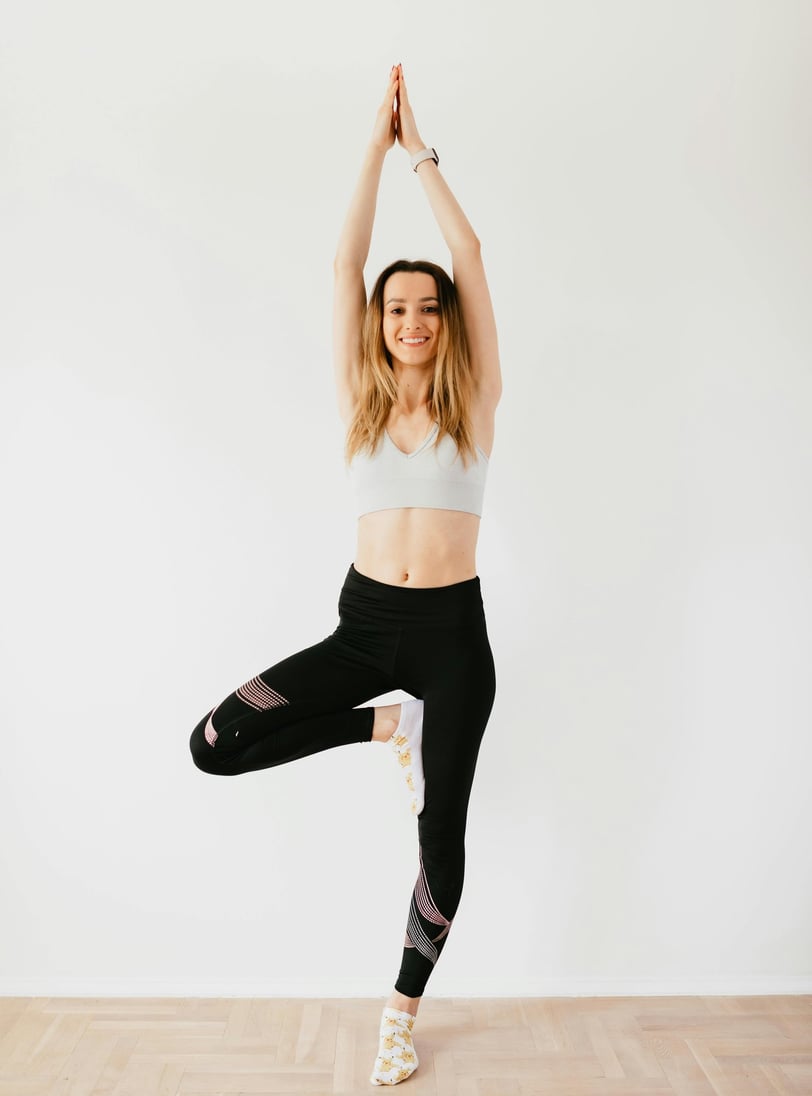Vrikshasana (Tree Pose): Steps, Benefits, and Disease Prevention
Learn Vrikshasana (Tree Pose), a powerful yoga posture to improve balance, posture, and mental focus. Discover its step-by-step guide, health benefits, and disease prevention insights.


Vrikshasana or Tree Pose
Vrikshasana, or Tree Pose, is a classic standing yoga posture that enhances balance, focus, and concentration while strengthening the legs and core. It’s also known to improve stability and posture. Here’s a quick guide to practicing Vrikshasana:
How to Perform Vrikshasana (Tree Pose)
1. Start in Mountain Pose (Tadasana): Stand with your feet together, arms by your sides, and distribute your weight evenly across both feet.
2. Shift Weight to One Leg: Shift your weight onto your left leg, grounding firmly through your foot and activating your thigh.
3. Place the Other Foot on the Inner Thigh: Bend your right knee and bring the sole of your right foot to the inner left thigh. Avoid placing it on the knee; instead, place it above or below.
4. Balance and Breathe: Once steady, press your palms together in a prayer position (Anjali Mudra) at your heart center. Find a focal point to help maintain your balance.
5. Raise Your Arms (Optional): If comfortable, you can raise your arms overhead, keeping your palms together or shoulder-width apart.
6. Hold and Focus: Hold the pose for 20–30 seconds, or as long as comfortable, focusing on deep, steady breaths.
7. Release and Switch: Lower your foot, return to Mountain Pose, and repeat on the other side.
Benefits of Vrikshasana
Improves Balance and Stability: Tree Pose engages the core and leg muscles, enhancing physical balance.
Builds Mental Focus: Balancing postures like Vrikshasana help cultivate focus, mental clarity, and calm.
Strengthens Legs and Ankles: This pose is excellent for building strength in the legs, especially the calves and thighs.
Improves Posture: Tree Pose promotes an upright, aligned stance, which can help reduce back and shoulder tension.
Prevention of Diseases from Vrikshasana:
Vrikshasana (Tree Pose), a foundational yoga posture, provides numerous benefits, including disease prevention and improved overall health. Here are some diseases or conditions that regular practice of Vrikshasana may help prevent or manage:
1. Stress and Anxiety Disorders
How it helps: By improving focus and promoting calmness, Vrikshasana helps reduce stress and anxiety, potentially preventing related disorders such as hypertension and depression.
2. Postural Problems
How it helps: Vrikshasana strengthens the spine and improves balance, reducing the risk of postural issues like scoliosis or kyphosis.
3. Bone-Related Disorders
How it helps: It enhances bone strength and density, which can help prevent osteoporosis.
4. Arthritis
How it helps: The pose increases joint stability and strengthens muscles around the knees, hips, and ankles, helping to manage or prevent joint degeneration.
5. Neurological Disorders
How it helps: By improving balance and coordination, Vrikshasana can help prevent fall-related injuries, especially in the elderly.
6. Obesity and Related Conditions
How it helps: Regular practice boosts metabolism and enhances muscle tone, contributing to weight management and reducing the risk of obesity-related diseases like diabetes.
7. High Blood Pressure
How it helps: Practicing the pose with mindful breathing lowers stress and supports healthy blood pressure levels.
8. Chronic Fatigue Syndrome
How it helps: Vrikshasana improves energy levels by enhancing circulation and relieving physical and mental exhaustion.
9. Digestive Disorders
How it helps: It stimulates the abdominal organs, aiding digestion and preventing issues like constipation or indigestion.
10. Respiratory Issues
How it helps: Practicing Vrikshasana with deep breathing enhances lung capacity and helps in preventing respiratory disorders like asthma.
Incorporating Vrikshasana into a holistic yoga practice ensures balanced physical, mental, and emotional health, preventing a range of lifestyle-related diseases. Always pair it with other poses, a healthy diet, and mindfulness for optimal benefits.
Tips for Beginners
Use a Wall for Support: If you’re finding it hard to balance, try practicing with a hand lightly touching a wall.
Start with a Lower Placement: Beginners may find it easier to place the foot on the calf instead of the thigh.
